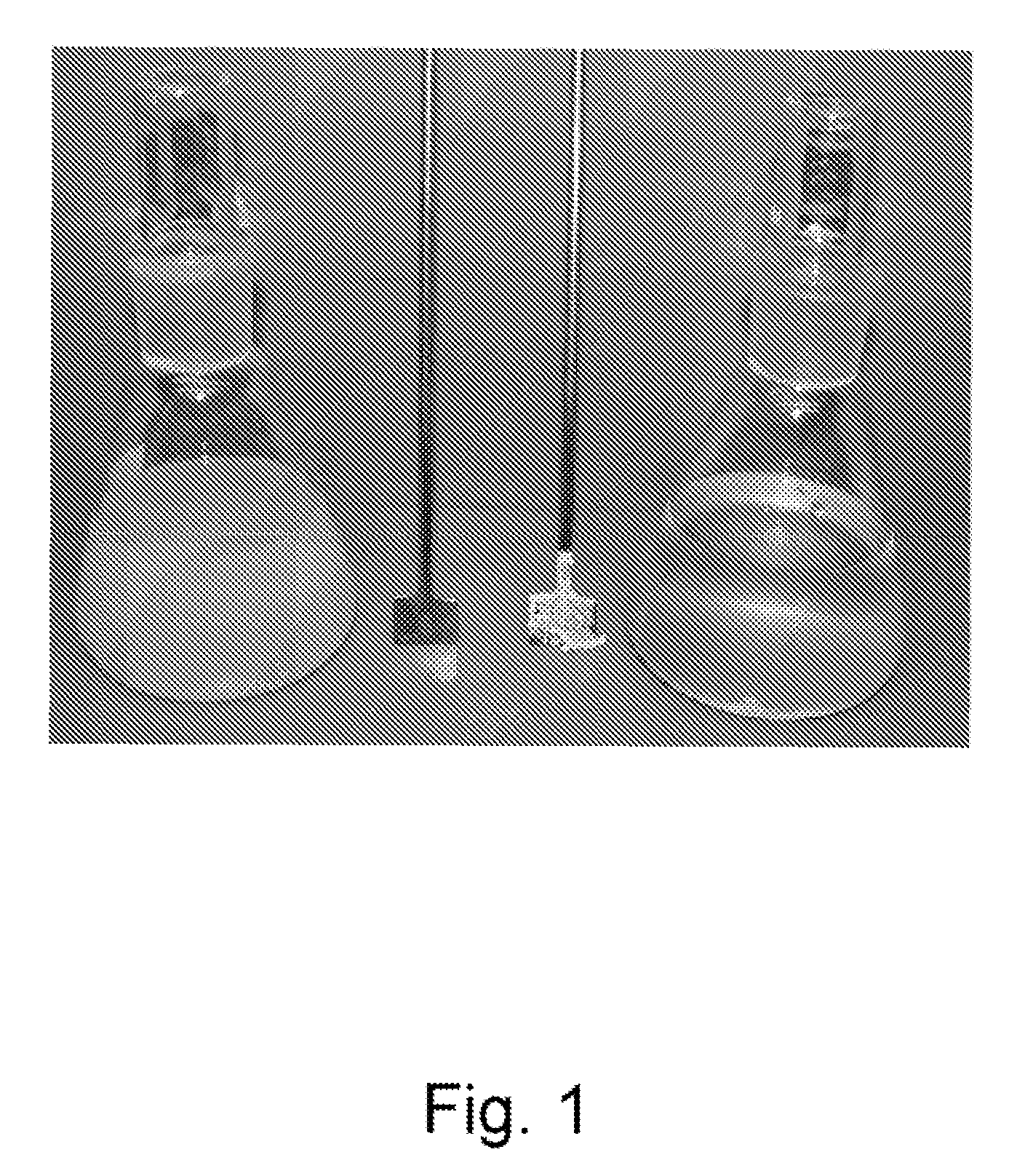Enzymatic hydrolysis of a polymer comprising vinyl acetate monomer
a technology of enzymatic hydrolysis and polymer, which is applied in the field of enzymatic hydrolysis of a polymer comprising vinyl acetate monomer, can solve the problems of significant machine downtime and reduce the quality of paper products
- Summary
- Abstract
- Description
- Claims
- Application Information
AI Technical Summary
Problems solved by technology
Method used
Image
Examples
examples 1-3
[0137]Polymer preparations comprising vinyl acetate monomer is hydrolysed at a constant pH under release of acetate by an enzyme. The release of acetate as a function of time is measured by neutralization with base by pH-stat titration.
[0138]The Titrator (see Equipment) is turned on, the water bath is set to 35° C. and the electrode is calibrated using regular calibration buffers. Fifteen ml of substrate emulsion is added to each beaker and allowed to heat for 3 min to obtain the right temperature (the substrate should be stirred at all times prior to use to avoid precipitation). The pH is adjusted with a freshly made diluted NaOH solution (25 mM). Enzyme solutions (in de-ionised water) are prepared on the basis of highly purified and desalted enzymes corresponding to Enzymes A)-L). The solutions correspond to an absorbance of A280=0.15, and 200 micro-liter thereof is added to the substrate emulsion and the titration is begun, using 25 mM NaOH. After 4 min the titration is stopped. ...
example 1
Hydrolysis of PVAc Homopolymer
[0140]The ability of different lipolytic enzymes to degrade a PVAc homopolymer preparation was measured as described above. Before addition of the enzyme to the substrate emulsion, pH was adjusted to 8. The results are shown in table 1.
[0141]
TABLE 1PVAchydrolytic activityType of enzymeEnzyme(U / ml)CutinaseA) H. insolens2.9B) Thermostable variant of A)1.8C) Thermostable variant of A)3.0D) F. solani pisi1.0Lipase B fromE) C. antarctica13.6Lipase fromF) P. cepacia0.6PseudomonasG) P. sp.0.2Other lipasesH) Phospholipase from Por-0cine PancreasI) NOVOCOR ADL lipase0J) RESINASE A 2X lipase0K) Variant of J)0L) Ferulic acid esterase from0
example 2
Hydrolysis of a Vinyl Acetate Copolymer
[0142]The ability of lipolytic enzymes to degrade a vinyl acetate copolymer preparation consisting of vinyl acetate and ethylene was measured as described above. Before addition of the enzyme to the substrate emulsion, pH was adjusted to 7. The results are shown in table 2.
[0143]
TABLE 2HydrolyticType of enzymeEnzymeactivity (U / ml)CutinaseA) H. insolens1.2B) Thermostable variant of A)0.6C) Thermostable variant of A)0.5Lipase B fromG) C. antarctica0.3Other lipasesJ) RESINASE A 2X lipase0
PUM
| Property | Measurement | Unit |
|---|---|---|
| pH | aaaaa | aaaaa |
| pH | aaaaa | aaaaa |
| specific gravity | aaaaa | aaaaa |
Abstract
Description
Claims
Application Information
 Login to View More
Login to View More - R&D
- Intellectual Property
- Life Sciences
- Materials
- Tech Scout
- Unparalleled Data Quality
- Higher Quality Content
- 60% Fewer Hallucinations
Browse by: Latest US Patents, China's latest patents, Technical Efficacy Thesaurus, Application Domain, Technology Topic, Popular Technical Reports.
© 2025 PatSnap. All rights reserved.Legal|Privacy policy|Modern Slavery Act Transparency Statement|Sitemap|About US| Contact US: help@patsnap.com


